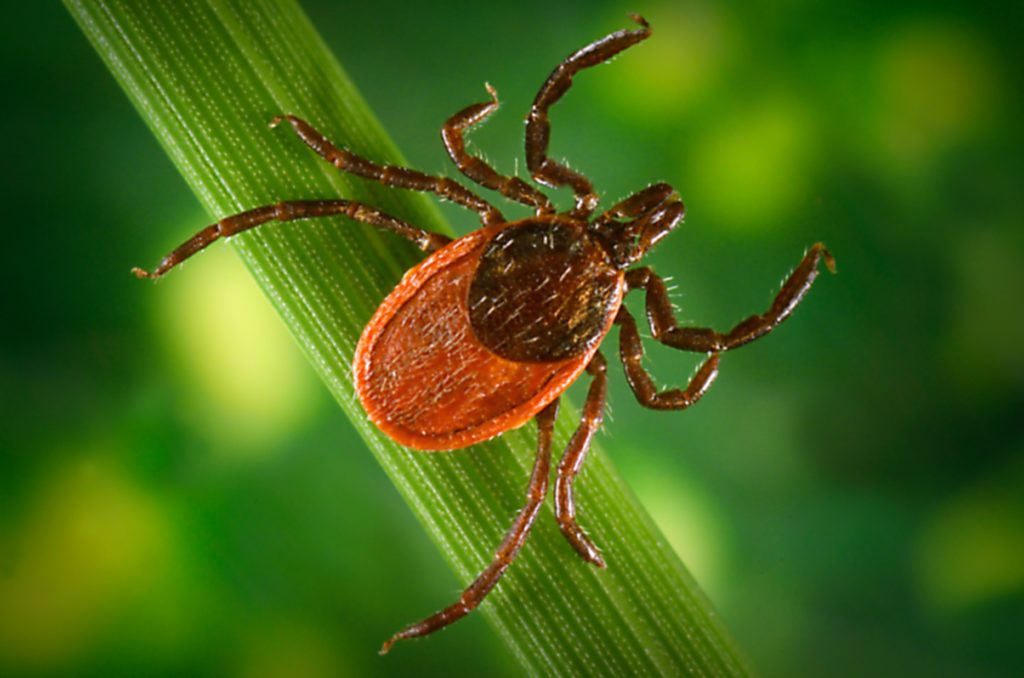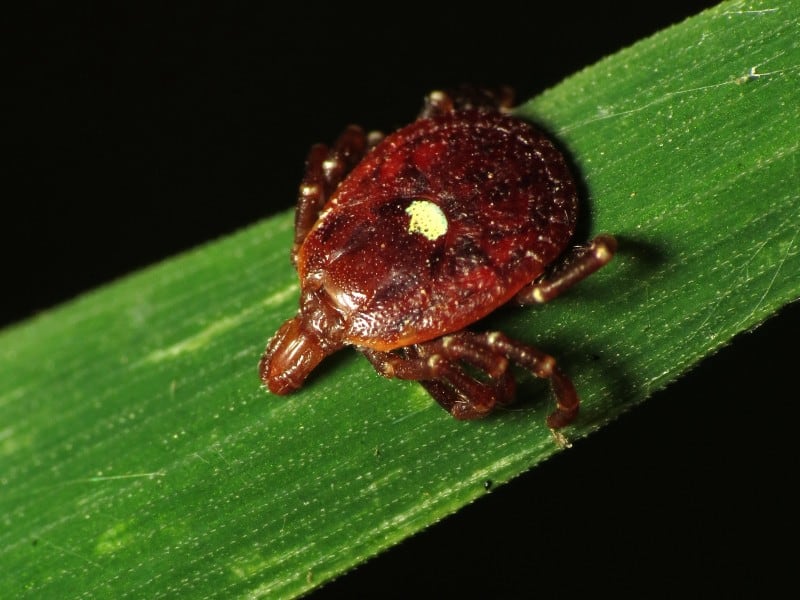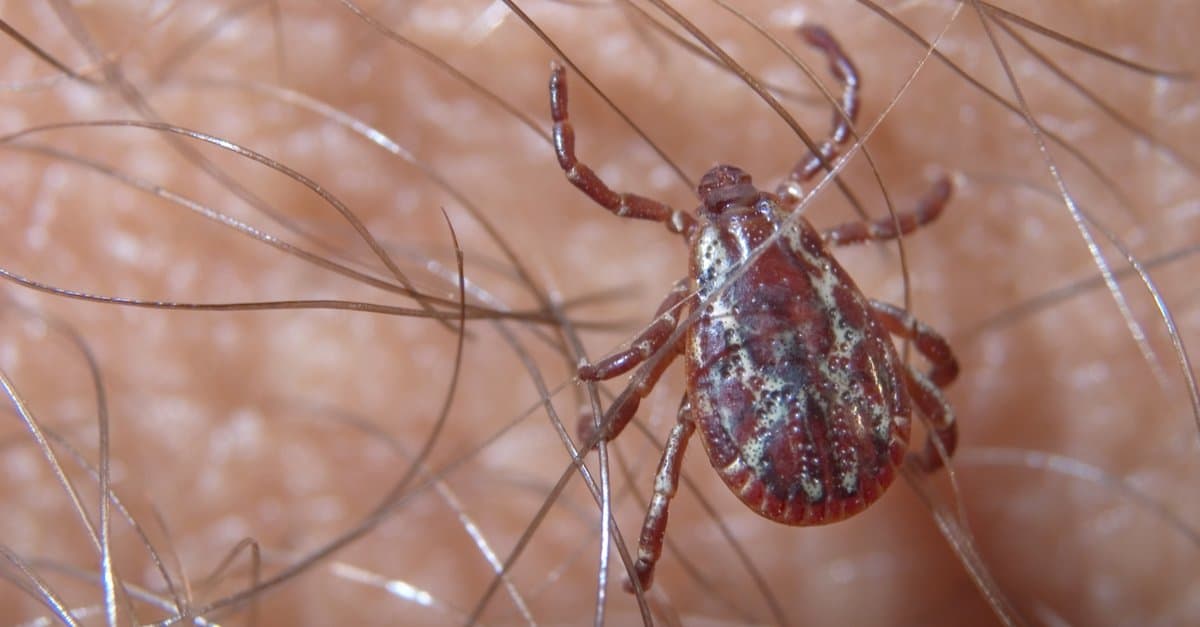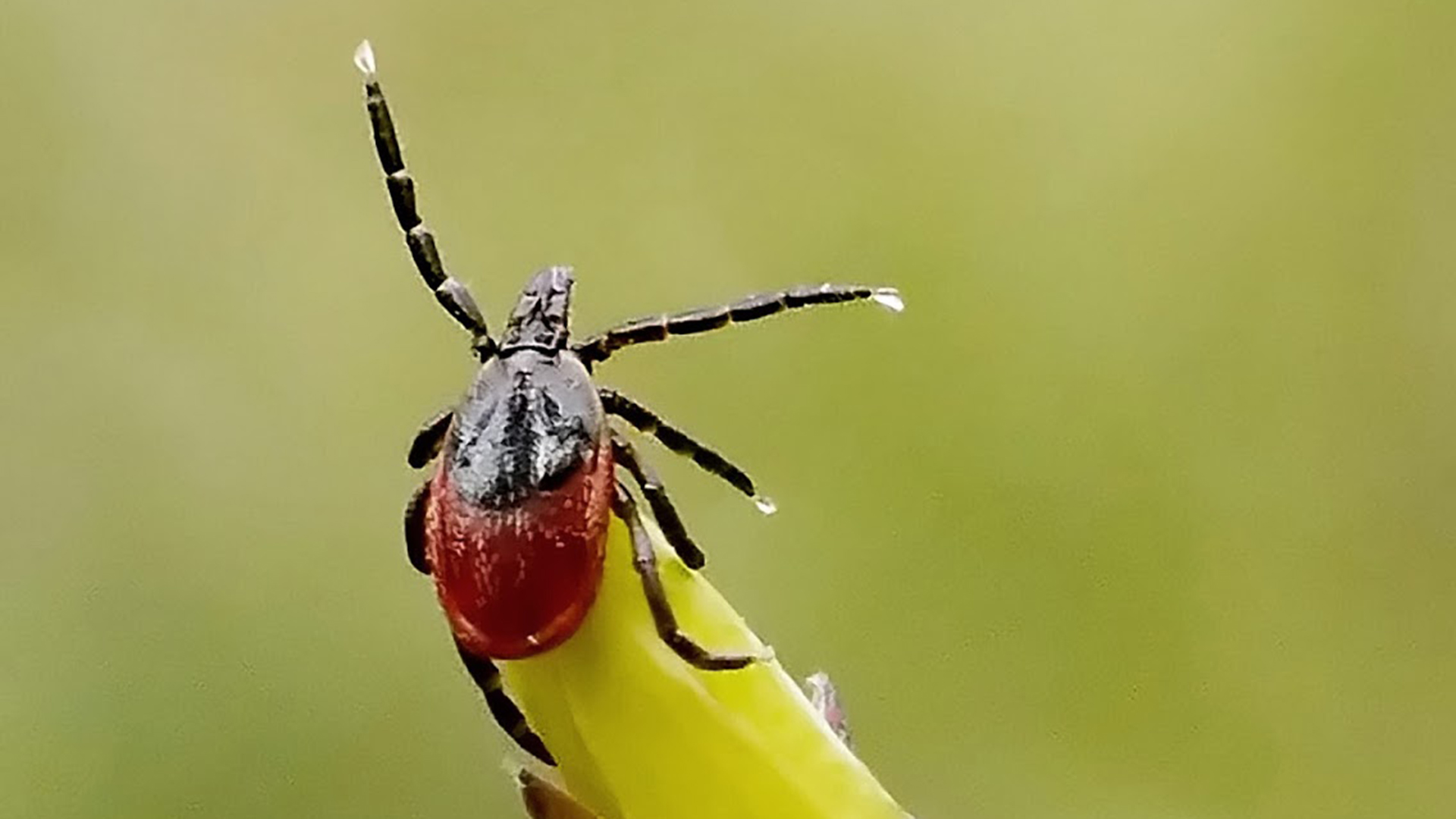Ticks are a common problem in Kentucky, and there are several different types of ticks found in the state. Some of these ticks are more medically important than others, and some are more commonly found in certain areas or habitats.
In this article, we will explore the seven types of ticks found in Kentucky, including their identifying characteristics, habitats, and potential health risks. We will also provide tips for avoiding tick bites and protecting yourself from tick-borne diseases.
You are reading: 7 Types Of Ticks In Kentucky

7 Types Of Ticks In Kentucky
Lone Star tick (Amblyomma americanum)

The Lone Star tick, also known as Amblyomma americanum, is a type of tick that is indigenous to much of the eastern United States and Mexico. It is commonly found throughout the eastern, southeastern, and south-central states, and its distribution, range, and abundance have increased over the past 20-30 years.
The Lone Star tick is an aggressive, generalist feeder that actively pursues blood meals and is not specific about the species of host upon which it feeds. It feeds on the blood of various animals, including humans, and can remain attached to its host for as long as seven days until it is fully engorged with blood.
The Lone Star tick is associated with bacterial, viral, and protozoal diseases, including Southern Tick-Associated Rash Illness (STARI), Human (Monocytic Ehrlichiosis), Rocky Mountain Spotted Fever, and ‘Stari’ borreliosis.
It is important to take precautions to avoid tick bites, such as wearing protective clothing and using insect repellent when spending time outdoors in areas where ticks are common.
American Dog Tick (Dermacentor variabilis)

The American Dog Tick, also known as Dermacentor variabilis, is a type of tick that is found predominantly in the United States, east of the Rocky Mountains. It is commonly found over most of North America, predominantly along forest edges and in areas with little or no tree cover, such as grassy fields and scrubland, as well as along walkways, sidewalks, and trails.
Read more : 6 Deadly Types Of Scorpions
American Dog Ticks are 3-host ticks, meaning they use three different hosts in their lifecycle, feeding on people and a variety of animals ranging in size from rodents to livestock.
Adult stages prefer medium-sized hosts, including raccoons, skunks, cats, dogs, and other canids, while larvae and nymphs mainly infest small mammals including mice, voles, rats, and chipmunks.
Adult males and females are active April-early August in most regions, and are mostly found questing in tall grass and low lying brush and twigs. Adult American Dog Ticks commonly attack humans, typically climbing to the crown of the head.
American Dog Ticks are associated with bacterial and viral diseases, including Rocky Mountain Spotted Fever and Tularemia.
It is important to take precautions to avoid tick bites, such as wearing protective clothing and using insect repellent when spending time outdoors in areas where ticks are common.
Blacklegged Tick (Ixodes scapularis)

The Blacklegged Tick is the main vector of Lyme disease in North America, and it is associated with several other bacterial and viral diseases, including Anaplasmosis, Babesiosis, and Powassan virus disease.
The lifecycle of Blacklegged Ticks generally lasts at least two years, during which they go through four life stages: egg, larva, nymph, and adult. After the eggs hatch, the ticks must have a blood meal at every stage to survive, and they can feed on mammals, birds, reptiles, and amphibians.
Adult females are distinguished by a white dot or “lone star” on their back, and they are the most likely to bite humans. It is important to take precautions to avoid tick bites, such as wearing protective clothing and using insect repellent when spending time outdoors in areas where ticks are common.
Winter Tick (Dermacentor albipictus)
Read more : Discover The 2 Types Of Rattlesnakes In Ohio
Winter Tick, also known as Dermacentor albipictus, is a species of hard tick that parasitizes many different mammal species in North America. It is commonly associated with cervid species such as elk, white-tailed deer, mule deer, and caribou but is primarily known as a serious pest of moose.
The tick can be found all across North America and has a large geographic distribution. While it can be found in several different habitats, it is often located in areas with a presence of moose. Here are some key facts about the Winter Tick:
– Scientific Name: Dermacentor albipictus
– Common Name: Winter tick or Moose tick
– Description: Winter ticks are approximately ¼ inch in length, with females being larger than males. The adult female is mostly reddish-brown, but with a white dorsal shield behind the head. The smaller adult male is dark brown with some white markings.
– Life Cycle: The lifecycle of D. albipictus lasts for about a year, and it is a single-host tick. This means that the entire lifecycle of the tick (larvae, nymphs, and adults) progresses on a single host animal. First, in late summer, larvae hatch from eggs laid on the ground by adult females. The larvae then attach to a host, feed, and molt into nymphs. The nymphs then attach to a host, feed, and molt into adults. Adult females then attach to a host, feed, and mate. After mating, the females drop off the host and lay eggs on the ground.
– Health Risks: Infestations of Winter Ticks can result in anemia, alopecia, emaciation, and death. While the Winter Tick is not known to transmit diseases to humans, it can cause significant harm to wildlife populations, particularly moose.
– Precautions: It is important to take precautions to avoid tick bites, such as wearing protective clothing and using insect repellent when spending time outdoors in areas where ticks are common.
Gulf Coast Tick
The Gulf Coast Tick, also known as Amblyomma maculatum, is a species of tick found in coastal areas along the Atlantic coast and Gulf of Mexico from New Jersey to Texas, but also extending its range into Oklahoma and Kansas. Here are some key facts about the Gulf Coast Tick:
– Scientific Name: Amblyomma maculatum
– Common Name: Gulf Coast Tick
– Description: Gulf Coast Ticks are reddish-brown in color and have a unique pattern of white spots on their back. Adult males and females are similar in size, with females being slightly larger. They have long, slender mouthparts and a more angular scutum than American dog ticks.
– Life Cycle: Gulf Coast Ticks are 3-host ticks, meaning they use three different hosts in their lifecycle. Newly hatched six-legged larvae feed on small animals such as rodents and birds. After feeding, they molt into eight-legged nymphs, which feed on larger animals such as raccoons and opossums. After feeding, the nymphs molt into adult males and females, which feed on larger animals such as deer and cattle. Adult stages prefer to feed on larger hosts including deer, cattle, and other livestock.
– Health Risks: Gulf Coast Ticks are known to transmit several diseases to humans and animals, including Rickettsia parkeri, which causes spotted fever rickettsiosis, and Hepatozoon americanum, which causes canine hepatozoonosis.
– Precautions: It is important to take precautions to avoid tick bites, such as wearing protective clothing and using insect repellent when spending time outdoors in areas where ticks are common.
Asian Longhorned Tick (Haemaphysalis longicornis)
The Asian Longhorned Tick, also known as Haemaphysalis longicornis, is a species of tick that is native to East and Central Asia, including China, Korea, and Japan, as well as Pacific islands including Australia, New Zealand, Fiji, and Hawaii. However, it has recently been introduced to the United States and is now considered an invasive species.
Here are some key facts about the Asian Longhorned Tick:
– Scientific Name: Haemaphysalis longicornis
– Common Name: Asian Longhorned Tick
– Description: The Asian Longhorned Tick is a small, reddish-brown tick that is difficult to distinguish from other tick species without microscopic examination. An unfed female is typically 2.0–2.6 mm long and 1.5–1.8 mm wide, and grows to 9.8 mm long and 8.2 mm wide with engorgement.
– Life Cycle: The lifecycle of the Asian Longhorned Tick lasts for about a year, and it is a three-host tick. This means that the entire lifecycle of the tick (larvae, nymphs, and adults) progresses on three different host animals. The tick feeds on a wide range of hosts, including livestock, wildlife, and humans.
– Health Risks: The Asian Longhorned Tick is known to transmit several diseases to humans and animals, including Rickettsia rickettsii, which causes Rocky Mountain spotted fever, and Borrelia burgdorferi, which causes Lyme disease.
– Precautions: It is important to take precautions to avoid tick bites, such as wearing protective clothing and using insect repellent when spending time outdoors in areas where ticks are common.
Brown Dog Tick
The Brown Dog Tick, also known as Rhipicephalus sanguineus, is a species of tick found worldwide, but more commonly in warmer climates. Here are some key facts about the Brown Dog Tick:
– Scientific Name: Rhipicephalus sanguineus
– Common Name: Brown Dog Tick, Kennel Tick, or Pantropical Dog Tick
– Description: The Brown Dog Tick is easily recognized by its reddish-brown color, elongated body shape, and hexagonal basis capituli (flat surface where mouthparts are attached). Adults are 2.28 to 3.18 mm in length and 1.11 to 1.68 mm in width.
– Life Cycle: The lifecycle of the Brown Dog Tick can be completed indoors, making it unusual among ticks. The entire lifecycle of the tick (larvae, nymphs, and adults) progresses on a single host animal, usually a dog. After the eggs hatch, the larvae attach to a host, feed, and molt into nymphs. The nymphs then attach to a host, feed, and molt into adults. Adult females then attach to a host, feed, and lay eggs.
– Health Risks: The Brown Dog Tick is known to transmit several diseases to dogs, including canine ehrlichiosis and canine babesiosis. Although rare, it can also transmit Rocky Mountain Spotted Fever to humans.
– Precautions: It is important to take precautions to avoid tick bites, such as wearing protective clothing and using insect repellent when spending time outdoors in areas where ticks are common. Controlling Brown Dog Tick infestations can be difficult and usually requires a four-step process: treating the pets, treating the house, treating the yard, and sanitizing the house by focusing on vacuuming.
FAQS
1. What are the most common types of ticks found in Kentucky?
The most common types of ticks found in Kentucky are the Lone Star tick, American Dog tick, Blacklegged tick, Winter tick, Gulf Coast tick, Asian Longhorned tick, and Brown Dog tick.
2. What diseases can ticks in Kentucky transmit to humans?
Ticks in Kentucky can transmit several diseases to humans, including Lyme disease, Rocky Mountain spotted fever, Southern Tick-Associated Rash Illness (STARI), and Tularemia.
3. When are ticks most active in Kentucky?
Ticks can be active year-round in Kentucky, but they are most active during the warmer months, from April to September.
4. Where are ticks commonly found in Kentucky?
Ticks are commonly found in wooded and grassy areas, as well as in areas with tall grass and brush. They can also be found in urban and suburban areas, particularly in areas with a high population of deer and other wildlife.
5. How can I protect myself from tick bites in Kentucky?
To protect yourself from tick bites in Kentucky, wear protective clothing such as long pants and sleeves, use insect repellent, and perform regular tick checks after spending time outdoors. It is also important to keep your yard and surrounding areas well-maintained and free of tall grass and brush.
Source: https://petstutorial.com
Category: Animals










